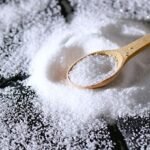Now Reading: Fat Loss Exposed: The Science Behind Where Your Fat Really Disappears
- 01
Fat Loss Exposed: The Science Behind Where Your Fat Really Disappears

Fat Loss Exposed: The Science Behind Where Your Fat Really Disappears
Unlock the science behind fat loss. Discover how your body converts fat into CO₂ and water with expert insights and actionable weight loss tips.
Table of Contents
Have you ever wondered what really happens to that stubborn fat when you lose weight? The answer might shock you—it’s not just burned off as energy or excreted through sweat. Instead, the science reveals that when you lose fat, your body actually converts it into carbon dioxide and water! In this blog post, we’re going deep into the fascinating process of fat metabolism, dispelling myths, and providing actionable tips to improve your weight loss journey. Prepare to uncover the truth behind lipolysis and learn how every breath you take contributes to fat loss.
The Science of Fat Loss: Background & Overview
What is Fat and Why do We Store It?
Our bodies store excess energy in the form of fat. This isn’t inherently bad—fat is a critical energy reserve, much like a battery backup for when our energy needs spike. When you consume more calories than you burn, excess calories are converted into triglycerides, which are then stored in fat cells. These lipid stores are crucial in fueling your body during periods of calorie deficit.
Key Terminology: Lipolysis, Triglycerides, & Metabolism
- Lipolysis: This is the metabolic process where triglycerides (fat molecules) are broken down into glycerol and fatty acids. When energy is needed, your body triggers lipolysis, releasing these components into the bloodstream.
- Triglycerides: The primary form in which fat is stored in your body, composed of carbon, hydrogen, and oxygen.
- Metabolic Pathways: The series of chemical reactions in the body that convert food into energy, with fat metabolism being a key component.
To shed light on fat loss, understanding these fundamental terms is essential. They form the backbone of how our bodies decide whether to store or break down fat.
Where Does the Fat Really Go?
The Process of Lipolysis: A Breakdown
When you embark on a weight loss journey, your body undergoes lipolysis. Here’s what happens step-by-step:
- Hormonal Activation:
- Hormones like epinephrine, norepinephrine, and cortisol signal fat cells to release energy when you’re in a calorie deficit.
- Breaking Down the Fat Molecule:
- The stored triglycerides in your fat cells break down into their basic components: glycerol and fatty acids.
- Conversion Into Energy:
- These components then enter metabolic pathways for energy production.
- Exhaling the Evidence:
- During the chemical reaction with oxygen, most fat atoms bind with oxygen to form carbon dioxide, which you exhale. The remaining part forms water, which is excreted in bodily fluids.
This process abides by the Law of Conservation of Mass—what goes in must come out. In the case of fat loss, the majority (around 84%) is exhaled as carbon dioxide, while the rest (16%) converts into water. Essentially, when you lose fat, you’re literally breathing it out! 2
Breaking Down the Numbers
A fascinating study highlighted by ScienceAlert reveals:
- To completely break down 22 pounds (10 kg) of fat, your body requires about 29 kg of oxygen.
- The chemical reaction produces roughly 28 kg of CO₂ and 11 kg of water.
- This means every breath you take contributes to expelling fat’s molecular remnants from your body.
These figures illustrate that fat isn’t just vanishing into thin air—it’s being converted and removed systematically via your lungs and kidneys.
Key Facts:
- Majority Exhaled as CO₂: Approximately 84% of the fat’s atoms are expelled as carbon dioxide.
- The Water Factor: The remaining 16% is converted into water, expelled through urine, sweat, and other bodily fluids.
- Role of Oxygen: Without adequate oxygen, the entire oxidation process wouldn’t be possible, reinforcing the importance of breathing during physical activity.
- Energy Conversion: While fat is metabolized to produce energy, its mass transformations underscore the physics behind weight loss.
Expert Opinions and Commentary
Renowned experts, including physicist Ruben Meerman, emphasize that understanding these processes is crucial for debunking weight loss myths. According to Meerman, “The correct answer is that most of the mass is breathed out as carbon dioxide. It goes into thin air.” This insight challenges common misconceptions and encourages a more science-based approach to weight management.
How This Affects You
What It Means for Your Weight Loss Journey
Knowing that fat loss is largely about exhaling carbon dioxide and losing water has practical benefits:
- Breathing Matters: While you can’t speed up fat loss merely by breathing deeper, arterial oxygen supply is vital during exercise to keep fuel oxidation efficient.
- Exercise is Key: Regular physical activity ensures that your body stays in the fat-burning zone. Activities that boost your respiratory rate—like cardio—facilitate the oxidation process.
- Nutrition and Hydration: A balanced diet supports metabolic health, and staying hydrated aids in the efficient removal of water produced during fat metabolism.
Actionable Tips for Effective Fat Loss
- Incorporate Cardiovascular Exercise:
- Engage in activities such as brisk walking, running, cycling, or swimming. These elevate your heart rate, boost oxygen intake, and thereby stimulate lipolysis.
- Fuel Your Body Right:
- A diet that balances proteins, healthy fats, and carbohydrates can catalyze effective fat loss. Avoid drastic calorie cuts that may hinder metabolic processes.
- Mindful Breathing Techniques:
- While you cannot “hyper-breathe” fat off, incorporating mindful breathing into your exercise routine may enhance oxygen circulation.
- Stay Consistent:
- Weight loss isn’t instantaneous. Consistency paired with a good understanding of fat metabolism will help maintain steady progress.
- Consult Professionals:
- Before making significant changes, talk to a nutritionist or a fitness expert. Personalized guidance can align your efforts with effective strategies based on your unique health profile.
Conclusion
In conclusion, the journey of fat loss is not as mysterious as many believe. Every time you lose weight, your body engages in a precise chemical reaction where fat is broken down into carbon dioxide and water. This scientific insight not only debunks long-standing myths but also emphasizes the importance of physical activity, balanced nutrition, and consistent lifestyle habits in achieving sustainable weight loss.











